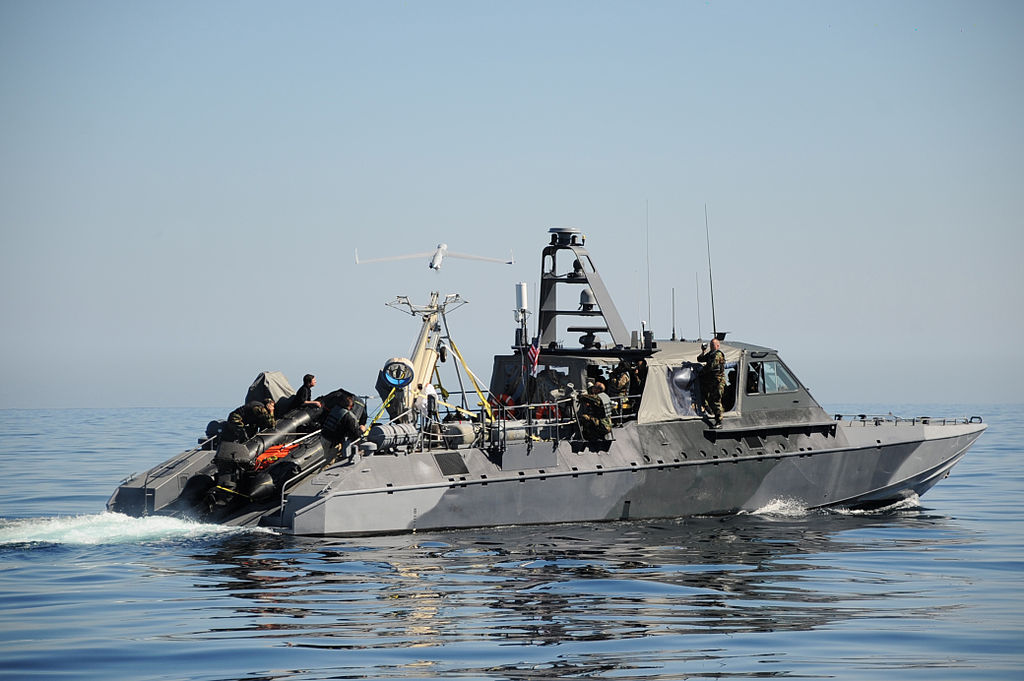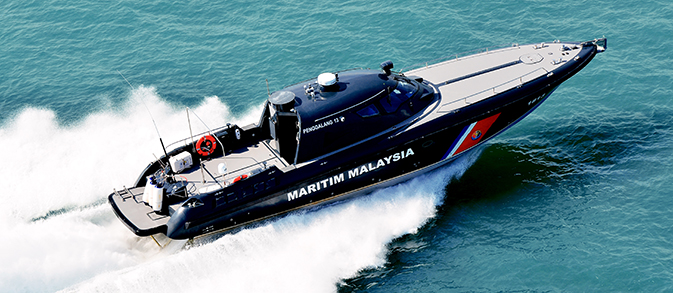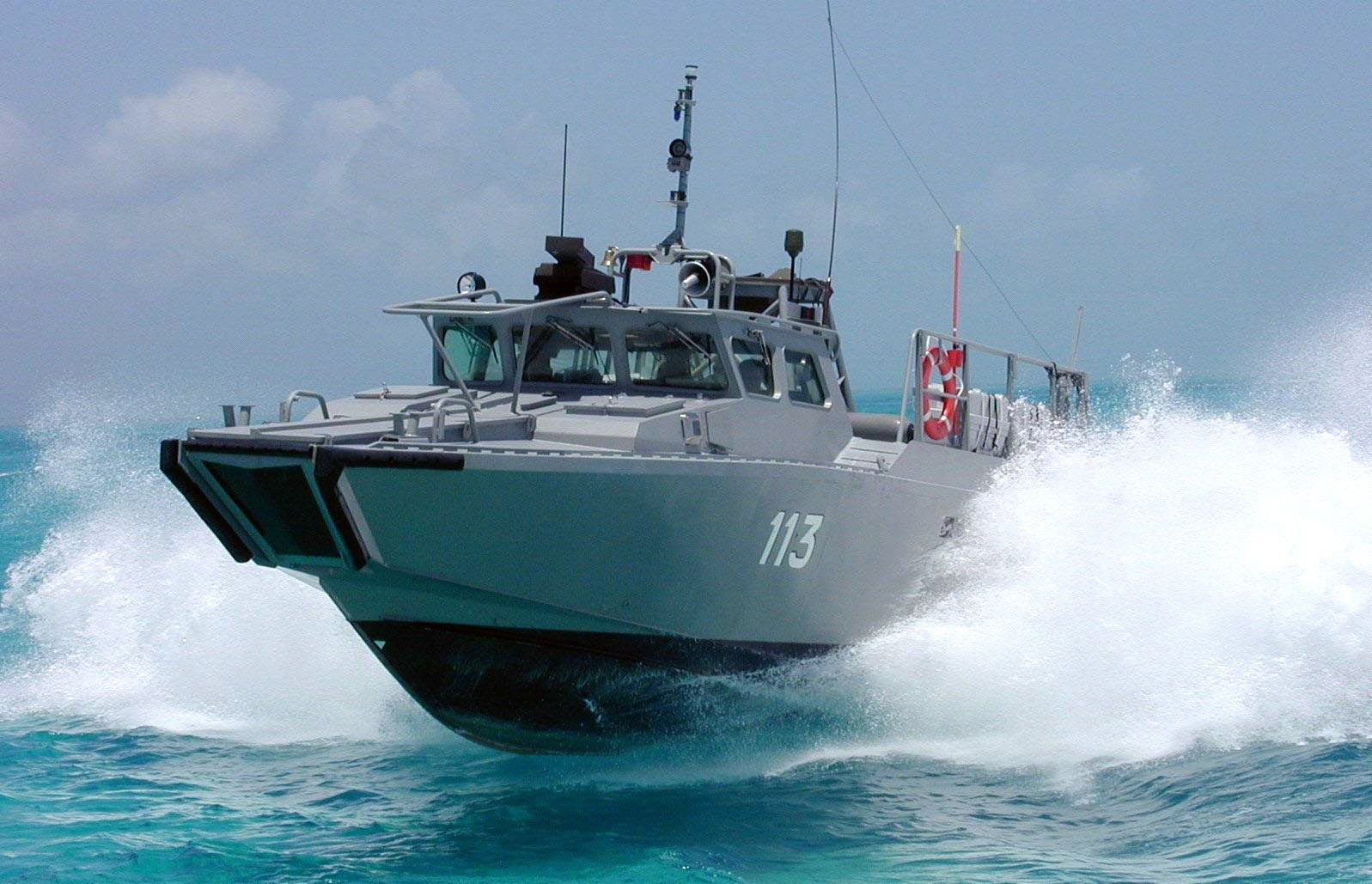SHAH ALAM: New Interceptor Boats Wanted. Shephard Media Malaysian correspondent Dzirhan Mahadzir is reporting that the RMN is looking to buy up to 18 fast interceptor craft (FIC). RMN has not issued a tender yet for the new FIC but local shipbuilders have been consulted on the requirement.
For the record, the RMN had wanted to buy FIC retired by the US Navy several years ago for use in ESSCOM but this fell through once the life cycle costs of the vessels were made known.


A Mark V SOC launching a ScanEagle UAV. US Navy picture
The procurement of the FIC are also included in the RMN’s 15 to 5 transformation plan. It is likely that when the FICs are in service, the RMN’s fleet of CB90 combat boats could be retired. A total of 17 CB90s were delivered from Swedish firm, Dockstavarvet, from 1996 to 2001. These assault/patrol boats were originally purchased to conduct patrol and surveillance in Sabah and Sarawak waters back then and most of them are still based there.


One of the Penggalang class FIAC procured from BYO Marine Sdn Bhd.
Anyhow as local shipbuilders have been consulted for the requirement, it must be noted that three companies had delivered three type of FICs or similar vessels to other government agencies, namely the police and the Malaysian Coast Guard (APMM).
One of the Watercat assault/landing boat of marine police
The police purchased 10 Fast Strike Craft Watercat M14 from Geliga Slipway, licensed from Marine Aleutech, between 2007 and 2009. Destini Shipbuilding and Engineering build two Penggalang class FIC for APMM as well 17-meter FIC.
A CGI rendering of a future assault/patrol boat of the marine police. PDRM
APMM also got 10 ONUK MRTP16 FIC from BYO Marine Marine Sdn Bhd, a joint-venture company between Boustead Heavy Industries Defence Technology and Yonca-Onuk JV.
Of course, they are other shipbuilders in Malaysia capable of building the FIC and winning the contract. It is likely that they will display their models/proposals of the FIC at LIMA 19.
— Malaysian Defence
If you like this post, buy me an espresso. Paypal Payment
View Comments (23)
@ marhalim
You forgot about kastam. Previously the biggest buyer of FICs was kastam. Quite a few dozen of the perantas FIC built from various designs by Destini, MSET and others. Now most passed on to APMM.
For example this Penggalang 45 is formerly Kastam Perantas KB78
http://tjglobal.com.my/v1/images/slide4%20copy.jpg
I am all for the navy to recapitalise its FIC force. I would also hope that the navy could stand up a research unit to study and develop asymmetric use of FIC craft in littoral environment, especially the melacca straits and sulu sea.
IMO there should also be clear difference of FIC capability and use between TLDM and APMM. While APMM task is to stop and board suspicious boats and ships, TLDM FIC should be a fighting machine, capable of destroying small boats of insurgents and non-state actors.
TLDM's FIC should also be an enabler in riverine/littoral warfare (instead of amphibious warfare). It is to enable SF/infantry warfare in the littorals itself, not just a transport phase like traditional amphibious warfare. The enlarged PASKAL force should be able to perform something like the what swedish amphibious force does, fighting amongst the islands.
Is the CB90 design still relevant to TLDM current and future requirements? If yes, would it be better if a local shipyard were to JV with Dockstavarvet and locally build the CB90s? No need to reinvent the wheel with another new FIC design then.
Reply
The CB90 is an assault boat not really an FIC
@...
"study and develop asymmetric use of FIC craft in littoral environment"
What asymmetric use? As ISR assets? That would be good, not difficult to implement, the main issue is ensuring smooth and timely flow of data to action units
@ marhalim
"The CB90 is an assault boat not really an FIC"
Same can be said of the Watercat M14.
@ chua
" What asymmetric use? "
I am thinking more towards the US Navy concept of "distributed lethality" but looking towards the smaller end of the fleet, the FICs to be FFBNW small missiles. FICs hidden in mangrove forests, small river mouths, under bridges that can attack larger ships from under the radar horizon or behind small islands or even bigger ships that block radar detection. It can be used to distract enemy ships while a proper attack from say Subs or MRCAs is done from another direction
Reply
The boat you alluded to is the UAE Navy Ghannata class fast missile boats. These are equipped with Marte missiles and guns. It is an enlarged CB90.
@...
I like the idea of a fleet of modern Perdana-class equivalents FFBNW the Kongsberg NSM
But fast boats of this size can't carry NSMs. The CB-90 is only rated for Hellfire-size missiles, the same for similar Chinese watercraft
@ marhalim, chua
I am thinking of something with the size of the CB90s, around 14-16m in length. So it is still a FIC.
To be FFBNW with small AshM something like the sea venom or C-701, both weighs only around 110kg. That is for full on conflict mode to harass FACs, OPVs and corvettes. Normal armament to combat insurgents and non-state actors would be a short range missile such as the LMM or the Hellfire MMW.
@ chua
" I like the idea of a fleet of modern Perdana-class equivalents FFBNW the Kongsberg NSM "
That was what the LMS should be. Instead it came out as a glorified coast guard boat.
Im thinking of maybe we buy 2-3 of these, run it, study its advantages and weaknesses, try to fit it with our littoral situation, and probably do a doctrine on how best something like this (probably a better design can be done from the study) can be used in our context of malacca straits and sulu sea.
http://d378ksdzd4d0om.cloudfront.net/workboatworldcom/attached_images/10735/files/original/01_Hero.jpg
It is a 14m boat armed with machine guns at the bow, 2x lightweight torpedoes and 2x AShMs (probably C-701)
“To be FFBNW with small AshM something like the sea venom or C-701, both weighs only around 110kg. That is for full on conflict mode to harass FACs, OPVs and corvettes”
The survival of these boats lies in dispersing into the coastal clutter of inlets and rivers, replenishing at small jetties and waiting for opportunity to strike. The further they venture into open sea, the easier they are to detect and kill. I’m concerned that a 25km range C-701 will mean having to sail very far out, and have to small a warhead. The enemy is more likely to come at us with frigates closest to our shores, with destroyers further out, than OPVs and FACs.